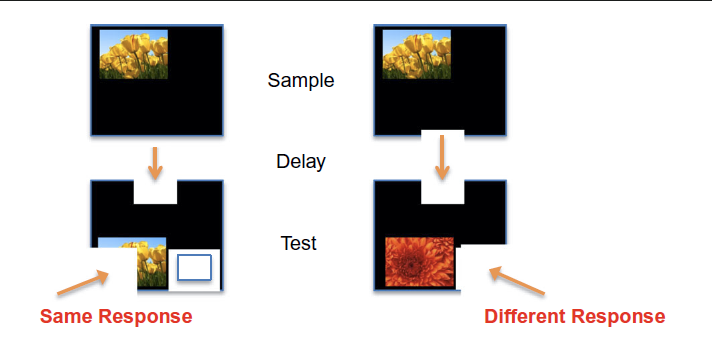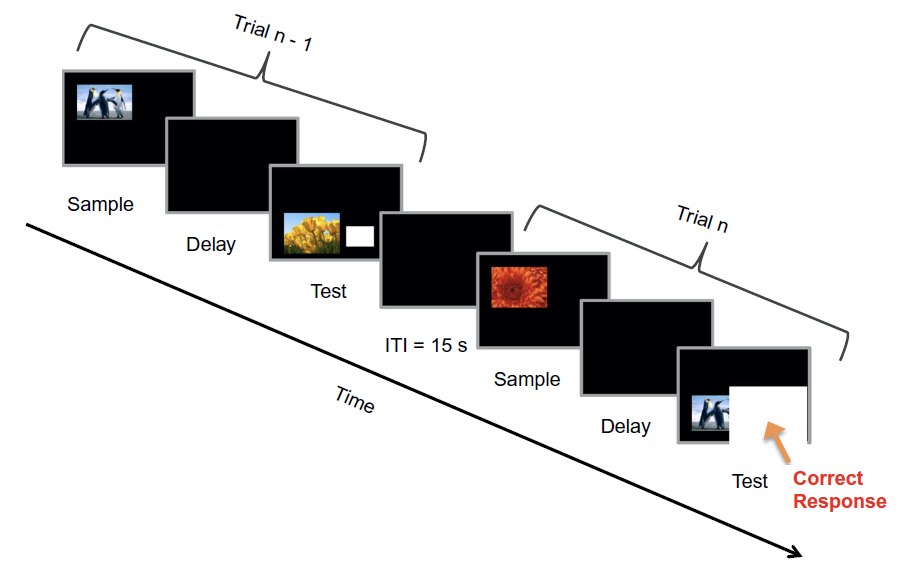A variety of things can influence memory, and we frequently find that existing knowledge can impact the learning of new information. For example, some people (including me) find it hard to learn to drive an automatic car because of their pre-existing knowledge of driving a stick shift (standard) car. For example, early during the transition, I sometimes mistakenly used my left foot for the break where I am used to having the clutch (you stop very fast). It is likely that I would have learned to drive an automatic care more easily without my prior knowledge of driving a stick shift. The issue that I have is that my previous knowledge alters my learning about the current situation. This general phenomenon is known as proactive interference.
There is ample experimental evidence to suggest that even working memory—the system that retains information over brief periods of time for processing—is affected by past experiences. Proactive interference, forgetting as the result of interference from previous events, can strongly impact performance on a task.
The data supporting this observation are rather varied and can be difficult to disentangle. One relevant variable is the size of the stimulus set—that is, the total number of stimuli being used in the experiment. The more individual stimuli are repeated—because the set size is small—the more likely it is that proactive interference will alter performance. If you memorize digits on successive trials, it’s easy to lose track of whether you saw “2-3-4” on this trial or “3-4-2”.
As experiments on working memory often use a small stimulus set, where items are frequently repeated, it is difficult to get a grip on the problem. Moreover, most work to date has focused on the impact of proactive interference from the immediately preceding trial, and as a result we have little understanding of the larger impact that proactive interferences plays on memory.
In a recent paper published in the Psychonomic Bulletin & Review, researchers Deepna Devkar and Tony Wright (The University of Texas Medical School) wanted to tackle these tricky issues and investigate the impact of both time and number of trials on proactive interference in the memory performance of monkeys.
Monkeys were trained to work on a same/different task using over 1000 stimuli. The large number of stimuli ensured that the stimuli were not repeated very often, thereby reducing the impact of unwanted proactive interference during the learning stage. In the task, the animals were presented with a sample stimulus photograph, followed by a delay and then another photographic stimulus along with a white rectangle. If the two photographic stimuli matched (i.e. were the same) then the animal needed to touch the photograph. If they did not match (i.e. were different) then the animal had to touch the white rectangle. The figure below shows a single trial in this procedure:

After the animals had learned this basic task, they were then presented with the crucial test in which interference stimuli were inserted either 1, 2, 4, 8 or 16 trials before a test trial (see the next figure for details). The interference stimuli were images which were the same as those seen on the test trial and the authors wanted to see whether the presence of the interference stimuli resulted in errors on the test trials.

In the figure, the test stimulus on trial n (penguins) was the sample stimulus from trial n-1. The repetition of a stimulus on the immediately following test could potentially produce confusion—and thereby proactive interference—as to whether the test stimulus matches the sample stimulus on the current trial or the sample stimulus on the previous trial.
If there is such interference, then at least two things could be controlling the effect, which Devkar and Wright sought to disentangle: One possibility is the number of events (or stimuli) between the interfering stimulus (the “interferent”) and the test (in the above figure that would be just 1 event) or the amount of time between the two, or both.
Devkar and Wright found a strong effect of the number of events between the presentation of the interferent and the test trial, with performance being poorer when the interferents occurred immediately before the test trial. Interestingly, no corresponding effect of time delay was observed. This was surprising as there is much evidence to suggest that time delay is likely to matter, especially if one assumes that memory for earlier information decays with the passage of time.
To investigate this possibility further, Devkar and Wright ran the same experiment a second time but included longer delays between stimuli. Again, they observed no effect of time. This suggests that the number of events in between the interferent and the test trials were controlling performance, rather than time.
To make doubly sure, Devkar and Wright ran a third experiment in which they compared the impact of using both familiar and completely novel stimuli as the interferent and on the test trials. Again, they found an effect of the intervening number of events—however, they also found that the type of intervening event mattered, with the impact of proactive interference being greater with the novel stimuli. This suggest that the encounters with novel events were better remembered than familiar events (on trial n-1) and therefore caused more proactive interference (on trial n).
The event-based finding is in strong contrast to an analogous experiment in pigeons which found that time was an important factor in predicting the likelihood of proactive interference.
Author Tony Wright says “monkeys showed less memory interference when the interference and test were separated by more intervening trials (events), but this was independent of time manipulations. By contrast, in a previous companion study, pigeons had shown memory depended upon time, characterized by the ratio between delay time and time since interference.”
“Primates, unlike birds, perhaps explicitly remembered the intervening event” he continues.
This difference is “astounding” (that is a direct quote from the paper and I agree with it). So what does this tell us? Well, it suggests that there are fundamental differences between monkeys and pigeons in how memories are processed and the way in which they interact and interfere with each other. The authors hesitantly suggest that the primate brain might be better at using existing knowledge to make predictions about novel events than the avian brain. Any such conclusion would, of course, require much more work, however, this piece opens up exciting new possibilities for comparative cognition research.
And in case you are wondering, unlike pigeons, humans are also not affected by the passage of time in this task—just like our Simian relatives.
Focus article for this post:
Devkar, D. T., & Wright, A. A. (2016). Event-based proactive interference in rhesus monkeys. Psychonomic Bulletin & Review. doi: 10.3758/s13423-016-1005-x
